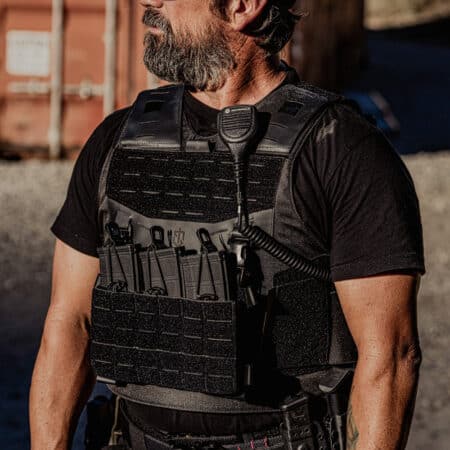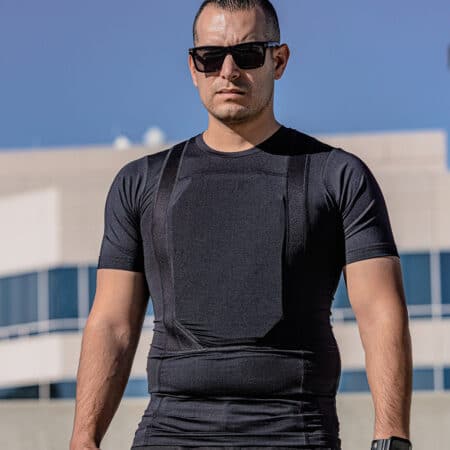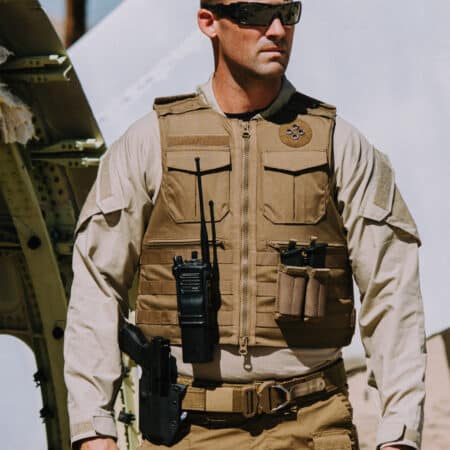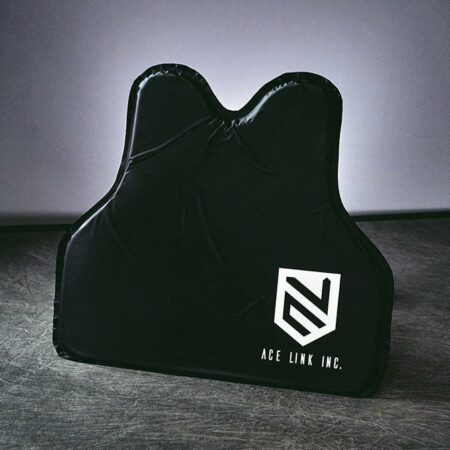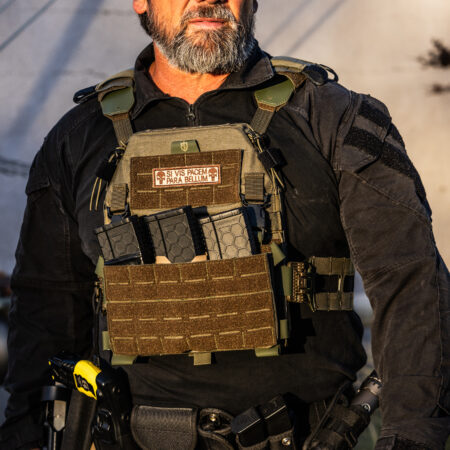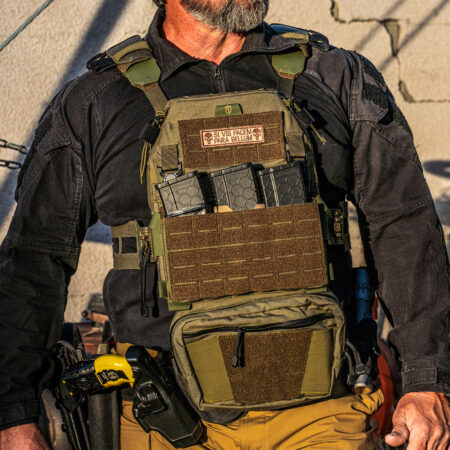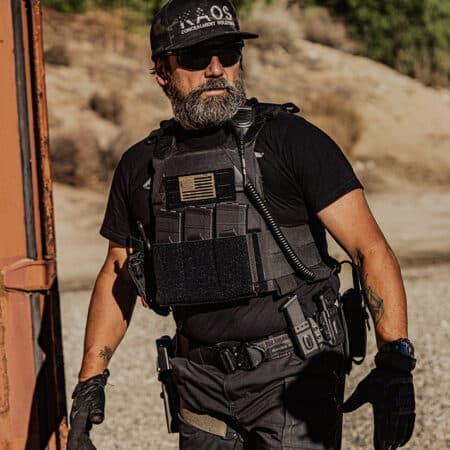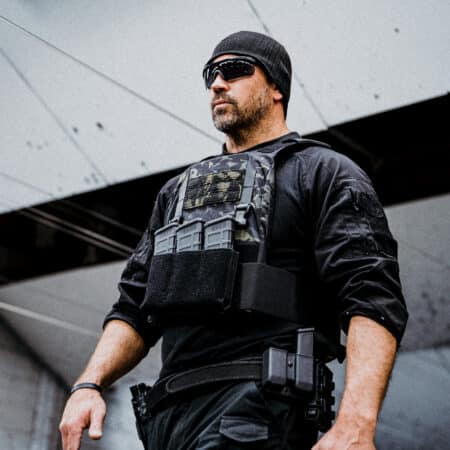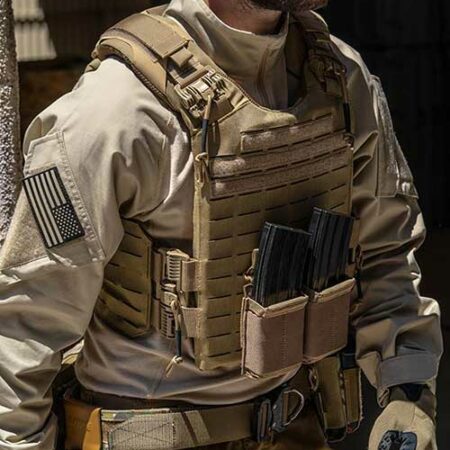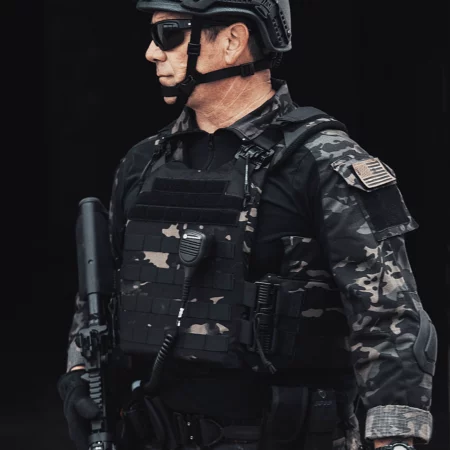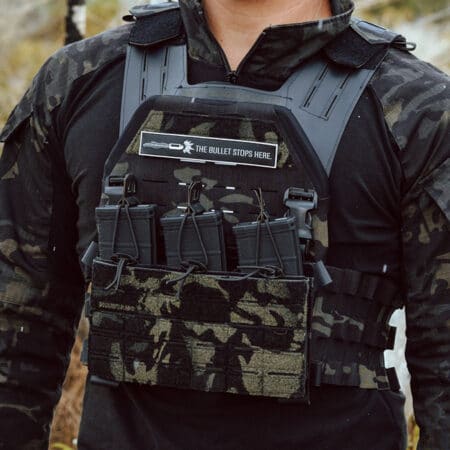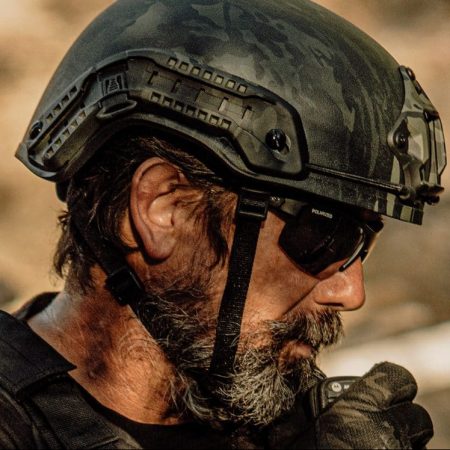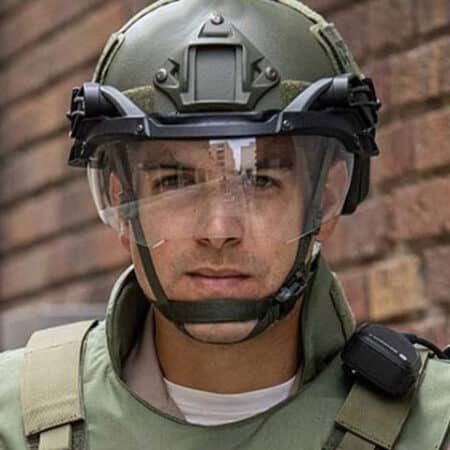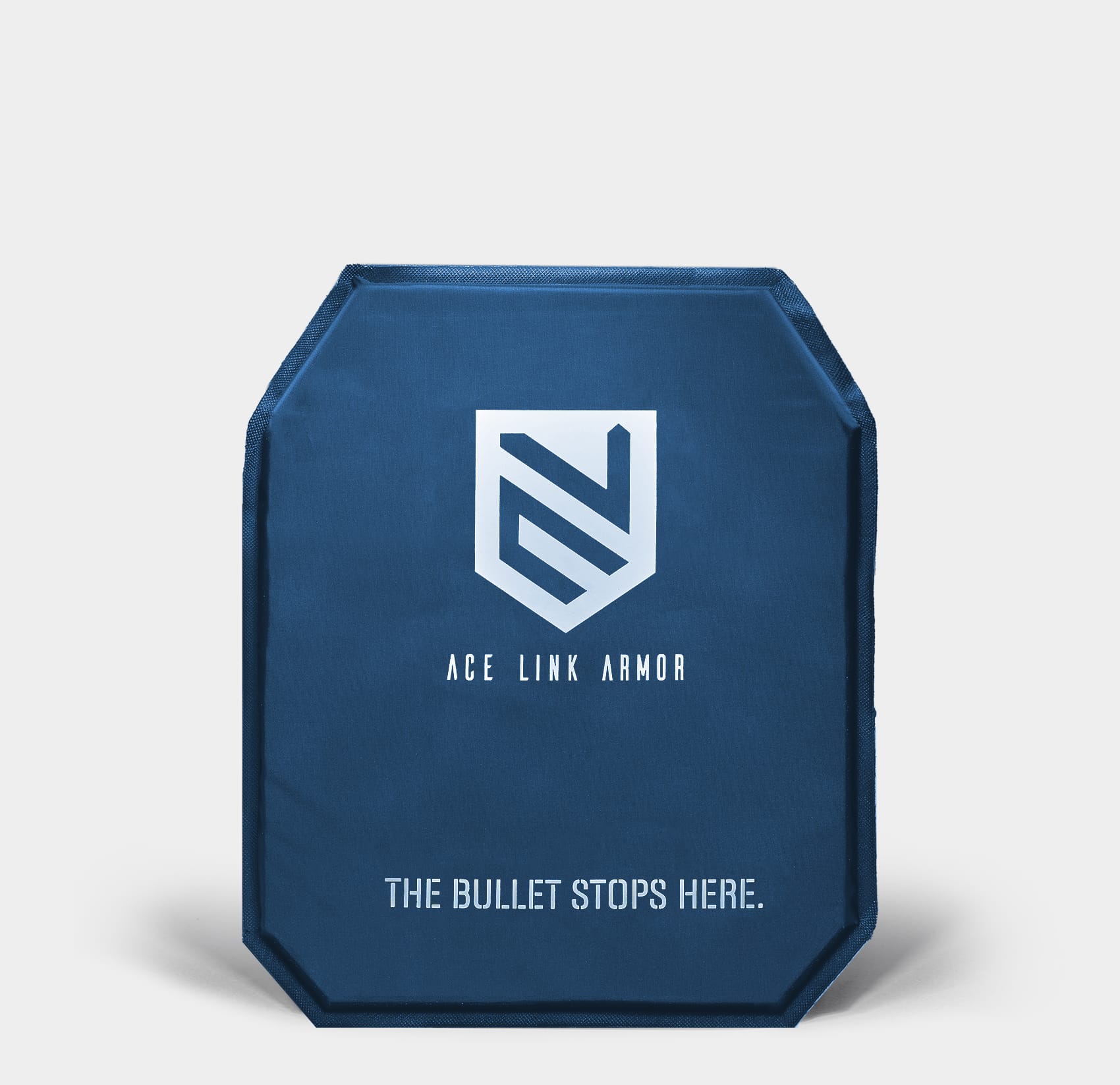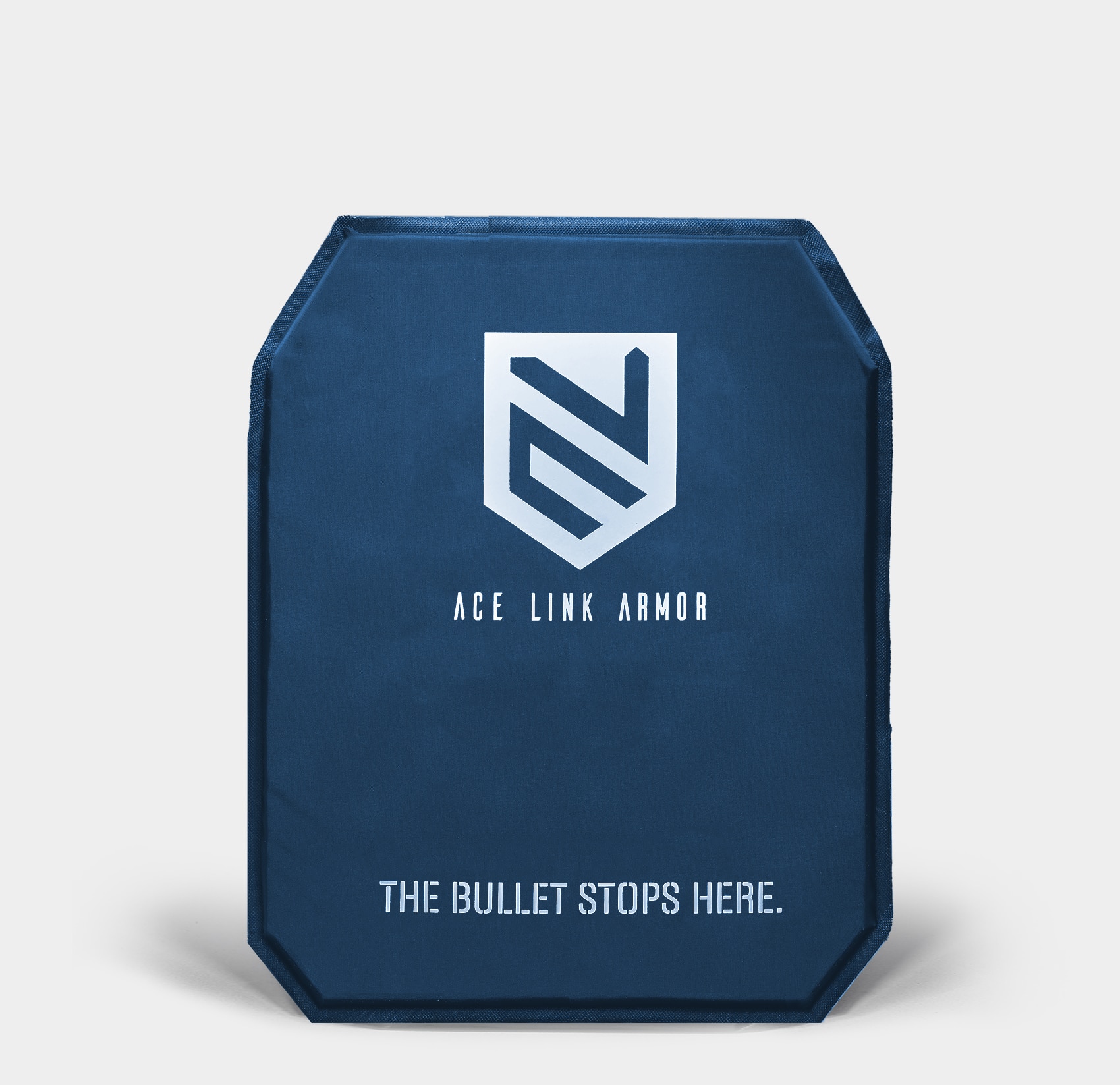- HISTORY OF BULLETPROOF VESTS.
- WHO INVENTED THE BULLETPROOF VESTS?
- BODY ARMOR EARLY YEARS
- US MILITARY BODY ARMOR
- INVENTING ARAMID
- WHAT MATERIAL IS USED TO MAKE BULLET PROOF VEST?
- ARAMID AS THE BALLISTIC MATERIAL
- UHMW PE AS THE BALLISTIC MATERIAL
- HOW MANY SHOTS CAN A BULLETPROOF VEST TAKE?
- NIJ BALLISTIC STANDARD
- DOES THE PRESIDENT WEAR A BULLET PROOF VEST?
- HOW LONG DO BULLETPROOF VESTS LAST?
- BODY ARMOR WARRANTY PERIOD
- HOW TO TAKE CARE OF YOUR BALLISTIC PANELS
- DO EMTS WEAR BULLET PROOF VESTS?
- SUMMARY
Bulletproof vests are pretty standard these days; however, many people, even those who own firearms, don’t know much about them. Therefore, in this post, we are going to talk about the history of body armor and answer some of your burning questions about bulletproof vests history.
HISTORY OF BULLETPROOF VESTS.
Although bullet proof vests have existed for hundreds of years, they were not widely used until the 20th century. During WW1 and at the beginning of WW2, only police officers were allowed to wear them. Typical body armor was a thick leather material called “flak jacket,” which was very bulky and heavy. It took a long time to put on and take off. Only after WW2 ended did the modernized bulletproof vest appear on the market.
In 1978, a new type of body armor made from Kevlar was invented, and it became wildly popular shortly afterward. This material is solid and lightweight, so just about anyone can use it without any problems.
Today, many different types of bullet proof vests are available for various purposes: Personl protection, ballistic protection, tactical law enforcement armor, and many others.Wearing body armor has significantly reduced the casualties among police officers during shootings. A hit from a gun can hardly make it through body armor nowadays.
Additionally, in the past few decades, there has been an increase in criminals using high-powered rifles, which often exceed the capability of police body armor to stop them. Today’s bulletproof vests are much better than the old ones because they provide additional protection over traditional Kevlar material (such as ceramic plates or other layers). A famous example is a concealable vest which allows flexibility while wearing it under clothes without appearing bulky or uncomfortable.
WHO INVENTED THE BULLETPROOF VESTS?
Bullet proof vests are commonly used and can protect the were against bullets, fragmentation, and other threats. A soft ballistic vest would protect against most pistol calibers and are lightweight. They are worn by many police officers, security guards, EMTs, and other law enforcement professionals. However, they don’t stop rifle rounds; for that, you need hard body armor plates that can be made of ceramic materials or steel.
You might be wondering, when were ballistic vests invented, and who did it? Well, many people tried their hand at making armor, and the first examples of commercially sold bulletproof armor can be traced back to Dublin, Ireland, and Joseon, Korea, between the 1840s and 1860s.
Some criminals also took a shot at making armor this time; for instance, the notorious American outlaw Jim Miller wore a steel breastplate as a form of body armor, which even saved Miller’s life on two occasions.
BODY ARMOR EARLY YEARS
In the 1880s, a tombstone physician found that a silk handkerchief had stopped a bullet from penetrating one of his examining bodies. He researched the bulletproof capabilities of silk and even wrote a paper on it, the first written account of bulletproof fabric. Silk was later used to make body armor. However, it was costly and only offered protection against the slow bullets of the time.
Many people regard Casimir Zeglen, who made the first silk body armor, as the inventor of the bulletproof vest.
At the beginning of the first war, the armor was quite expensive and ineffective against heavy rifle calibers. Therefore, soldiers weren’t issued any ballistic protection. However, in 1915, the British Army Design Committee made the first attempt towards making body armor for specific units.
Bomber shields were made for bomber pilots, who faced anti-aircraft guns and fragments and were severely under-protected. The armor was made with interwoven layers of silk and cotton stiffened with resin. Similar armor was also made for limited ground troops in 1916, and hardened breastplates were used later.
US MILITARY BODY ARMOR
The Germans and Americans also made attempts at arming their units. The US military developed the chrome-nickel steel Brewster Body Shield, which consisted of a breastplate and a headpiece. Though it could protect the wearer against the Lewis Gun bullets, it was cumbersome and weighed a staggering 40 pounds.
In the second world war, many attempts were made for reliable and practical body armor. Though some were successful, they couldn’t be scaled, and it was difficult for infantrymen to wear such heavy body armor and maintain mobility.
INVENTING ARAMID
In 1965, with the invention of materials like Kevlar, making practical ballistic vests became a lot easier. During the 1980s, the US military issued the PASGT kevlar vest to troops, which mainly stopped pistol calibers. However, these days, with lightweight ceramic and polyethylene hard body armor plates, armor can even stop rifle rounds as big as 30.06, and armor-piercing 308s.
WHAT MATERIAL IS USED TO MAKE BULLET PROOF VEST?
Well, there are many different types of materials that can be used to make a bulletproof vest. Aramid materials have been quite common for creating soft, lightweight armor.
ARAMID AS THE BALLISTIC MATERIAL
Aramid is a class of lightweight synthetic fibers that are very strong and heat resistant. When these fibers are tightly woven and placed in multiple layers, they become strong enough to stop bullets. Kevlar and Twaron are typical examples of Aramid fibers used for making body armor.
UHMW PE AS THE BALLISTIC MATERIAL
Though Kevlar vests are widely used these days, PE armors are also becoming popular. These vests are made up of Ultra-High-Molecular-Weight polyethylene. PE can be stronger than Kevlar as well and weighs less. Therefore, it is being used in body armor alongside Kevlar to increase the level of ballistic protection.
When it comes to body armor, manufacturers can’t get away with using low-grade materials. To offer maximum protection, they used the highest grade Kevlar and polyethylene.
HOW MANY SHOTS CAN A BULLETPROOF VEST TAKE?
A bulletproof vest will protect you from getting shot; however, not for long after it gets shot a few times. The amount of bullets a vest can take depends greatly on what it is rated from; for instance, you could keep shooting a level IIIA vest with 22 LR for a long time before it gives in. However, when it comes to stopping bigger calibers the vests are rated for, they deteriorate quickly.
NIJ BALLISTIC STANDARD
According to NIJ standards, soft armor inserts are to take six shots. Some armor brands may go higher; however, Ace Link American body armor truly stands out, as their vests can even take up to 40 or 50 rounds and stop all of them. Our bulletproof vest armor panels outperform every other brand in competition.
Still, once you have been hit with a bullet, you should replace your armor for practical use. The integrity of your bulletproof vest will begin to decline after it is shot even once. Assuming it got shot multiple times, it might not offer the same level of ballistic protection it initially did. This is why Law enforcement agencies will replace their body armor plate even after it is hit once.

Ace Link American body armor truly stands out, as their vests can even take up to 40 or 50 rounds and stop all of them.
DOES THE PRESIDENT WEAR A BULLET PROOF VEST?
Well, the secret service won’t acknowledge if he wears any armor regularly for apparent reasons. However, many people speculate that he does wear body armor. He probably doesn’t wear full-on Kevlar vests but must have some lightweight protection body armor vest that could save him on the off chance that he gets shot.
However, it doesn’t make much practical sense for the president to wear armor, especially since he has so many people around him for protection. Plus, it sends a wrong message to the public when their president wears body armor to be in public.
HOW LONG DO BULLETPROOF VESTS LAST?
Bulletproof vests are designed to be effective for five to ten years. The level of protection decreases and the amount of time that a vest will last can decrease when exposed to high temperatures, extreme cold, humidity in excess, or electrical interference such as hurricanes.
BODY ARMOR WARRANTY PERIOD
As technology advances, industry experts expect body armor vests to have component parts replaced about every three to five years. Eventually, it may become possible for the exterior shell material alone to last ten years with replacement of interior components as necessary.
Unfortunately, there is no foolproof system to determine the effective life of a bulletproof vest. As technology increases and changes, new ways are developed to increase protection time or decrease costs that will change how manufacturers create their products. As time goes by, the usefulness of each product decreases through normal wear and tear. The process might take longer if water interferes with some component parts but can happen much more quickly if parts are damaged due to an accident. When vests begin to show signs of wear—whether it’s fraying at stress points or broken threads—they should be replaced as soon as possible.
Law enforcement officers and other employees should look for signs that their bulletproof vests need to be replaced. If a vest appears worn out or damaged, it’s time to replace it with an up-to-date model. Businesses may wish to invest in regular safety inspections of each vest to find any problems before they become severe enough that the vest is no longer practical.
HOW TO TAKE CARE OF YOUR BALLISTIC PANELS
Bullet proof vests are resilient and long-lasting products that protect from extreme use when cared for properly. To maintain the quality of bulletproof vests over time, regular maintenance checks and schedule replacement will help ensure that workers stay safe on the job until new technology makes current models obsolete. For information about taking care of your body armor, visit our blog article “How to maintain and take care of your body armor.”
DO EMTS WEAR BULLET PROOF VESTS?
In most shooter situations, the EMTs are the first people to respond, and when they are trying to save lives, they could be at the risk of getting shot. Moreover, sometimes EMTs have to work near active shootings to save the lives of both law enforcement officials and innocent civilians.
Therefore, these brave men and women need to have some sort of ballistic protection. This is why most EMTs are starting to wear body armor as a part of their everyday uniform. In fact, it is starting to become a part of their standard equipment.
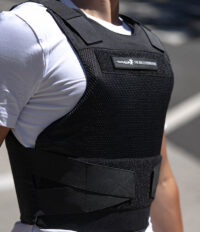
SPECTRE BULLETPROOF VEST
Ace Link Armor Spectre Body Armor provides comprehensive ballistic protection to ensure the wearer is safe when he needs it the most. NIJ.06 IIIA structure will stop multiple rounds of various handgun threats (up to .44 magnum).
A cooling mesh which resists the growth of bacteria, mold, and mildew while keeps the wearer cool and comfortable by effective heat dissipation.
Spectre bulletproof vest has been designed to provide perfect and unnoticeable protection whether worn under clothing or over top. It is an excellent choice for police officers, and even first responders who have to wear body armor under their uniform.
SUMMARY
We hope you enjoyed reading this article on the fascinating facts about body armor. What are some of your favorite fun facts? Let us know in the comments! If you want to purchase a vest, we have options for different budgets so be sure to browse our online store today!




